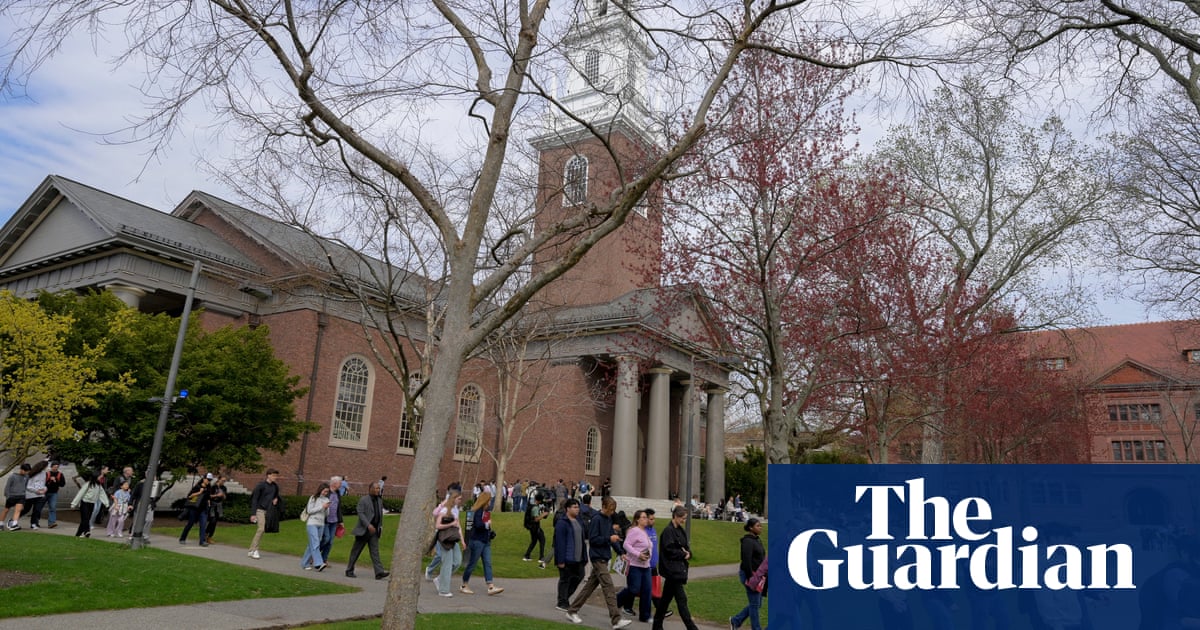This year’s summer months promise to be among the hottest on record across the United States, continuing a worsening trend of extreme weather, and amid concern over the impacts of Trump administration cuts to key agencies.
The extreme heat could be widespread and unrelenting: only far northern Alaska may escape unusually warm temperatures from June through August, according to the latest seasonal forecast from the National Oceanic and Atmospheric Administration (Noaa).
Indeed, summer-like weather has already begun for many parts of the country.
In International Falls, Minnesota – the self-proclaimed “icebox of the nation” – temperatures in the 90s arrived in early May, more than a month before the earliest previously known occurrence. A hundred miles south, the hot and dry weather helped fanned early-season wildfires burn out of control, forcing Governor Tim Walz to call in the national guard.
Across the western US, the latest Noaa update reports that a lack of springtime precipitation and very warm temperatures means this winter’s ample snowpack is rapidly melting – raising the threat of summertime drought and wildfires. Drier than normal weather has also intensified ongoing drought in Florida and the mid-Atlantic states.
Meanwhile, experts fear widespread cuts to staff and reduced funding for federal science, forecasting resources, and disaster response agencies will hamper efforts to keep people safe.
In Texas, where Donald Trump’s “department of government efficiency” (Doge) cuts have left the Houston office of the National Weather Service critically understaffed and without any permanent leadership, a record-setting heat continues to intensify and another busy hurricane season is looming. A mid-May heatwave in the Rio Grande Valley briefly made the region hotter than Death Valley.
Federal science agencies such as Noaa are now operating at reduced capacity despite the outsized weather threats. Hundreds of meteorologists have left the National Weather Service in recent months, and several offices, including Houston, have had to scale back the services they provide.
That’s left state and local officials, university staff and non-profits to try to take charge of public outreach on heat and other extreme weather.
Climate scientist Sylvia Dee and her colleagues at Rice University in Houston describe excessive heat as a kind of “slow violence” that compounds other public health threats, like air pollution and preexisting health conditions. “There’s just so many things that center around heat stress.”
“Extreme heat can hijack our brain’s ability to think clearly,” said Adrienne Heinz, a clinical research psychologist at Stanford University. “Those executive functions like decision-making and inhibition and sequencing tasks, they all become harder. It becomes like walking through mud. It affects your ability to learn if you’re a student or your ability to perform if you’re an employee. It doesn’t leave anything untouched, really.”
According to Noaa, excessive heat is already the leading cause of weather-related deaths in the United States, and getting worse. A 2024 study found that the number of heat-related deaths in the US have risen 117% since 1999. For vulnerable populations, such as migrants, prisoners or schoolchildren in under-cooled buildings, the burden of rising temperatures is compounded.
“I feel like Houston is ground zero for climate change,” said Dee. “I think there’s some level of frustration amongst us because, you know, we have been living through these conditions for many years.”
The oppressive summer forecast continues a worrying trend fueled by global warming: across the country extreme weather has increasingly become a life-threatening emergency.
“We’re going to have more people in harm’s way. The exposure of Houstonians to weather and climate disasters will only increase,” said Dee. “We’re very overwhelmed and trying desperately to sound the alarm.”
Indeed, extreme heat can have “cascading impacts” throughout society, said Heinz.
“These prolonged heat waves affect sleep, the cornerstone of our mental health,” said Heinz. “Our ability to weather adversity and emotionally regulate is compromised when we’re not getting good sleep.”
This year’s added political uncertainty brings questions on the ability of federal staff to predict, prepare, and respond to heat emergencies and other extreme weather, though for now, weather forecasts continue to be issued.
“It’s pretty scary. Summers are only getting hotter, and wildfire seasons have been getting longer and more intense for years,” said a climate scientist with the Department of Energy who wished to remain anonymous for fear of retaliation. “These disruptions to federal science infrastructure and emergency response capacity come at the worst possible time.”
After years of lobbying from frontline groups, the Biden administration instituted a first-ever set of national guidelines to protect vulnerable workers from the rising threat of extreme heat.
However, there are concerns Trump’s pick to lead workplace safety could undo that progress. That means efforts to prepare and plan for this year’s weather and climate extremes will likely fall on local leaders.
Over the past year, several heat-prone cities such as Tucson, Arizona, and states including California and Nevada have passed local regulations and ordinances designed to boost planning efforts to combat extreme heat.
“With the health, safety, and economic impacts of extreme weather increasing, mayors know that inaction is not an option,” said Mandy Ikert, the head of climate resilience with C40, an international group of cities working together on climate issues. “Cities are taking a broad range of approaches to help their residents stay safe during heat season, including investing in cooling centers, increased communication to residents, and new policies to make buildings and the people inside them safer.”
Even forward-thinking cities have struggled to keep up with the weather: an internal report from the city of Austin, Texas, showed that local efforts to adapt to higher temperatures have been persistently underfunded.

 German (DE)
German (DE)  English (US)
English (US)  Spanish (ES)
Spanish (ES)  French (FR)
French (FR)  Hindi (IN)
Hindi (IN)  Italian (IT)
Italian (IT)  Russian (RU)
Russian (RU)  1 day ago
1 day ago
























Comments